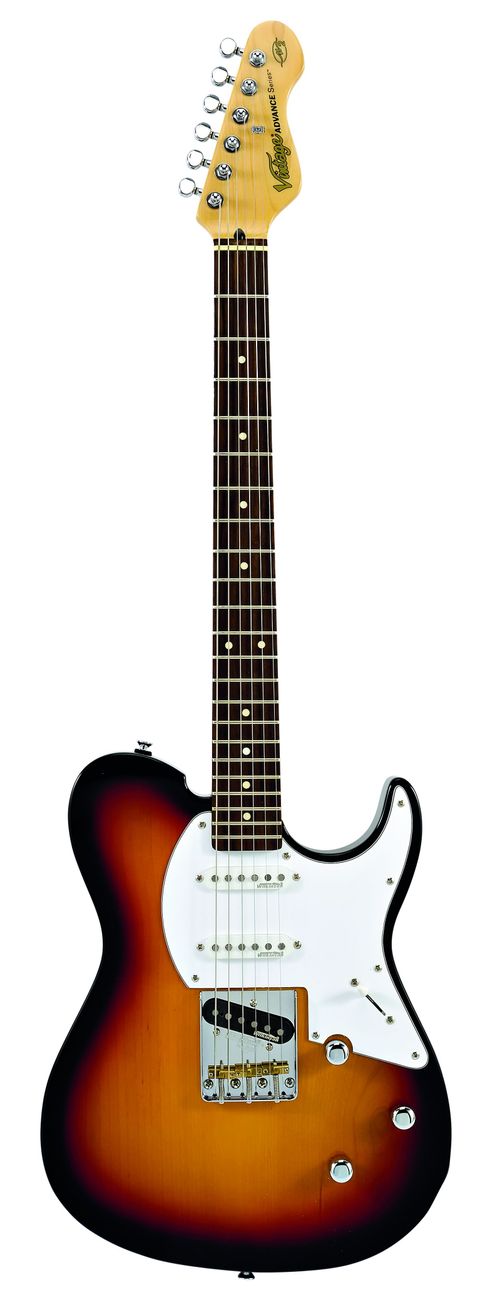A guitar that features the best parts of a Fender Strat and Tele has long been at the top of many a player's wish-list and this version of the AV2 unquestionably ticks a number of boxes.
A quick glance may fool you into perceiving a classic Tele-type design, but a closer look will reveal a small cutaway at the upper bout and a much more expansive lower cutaway too - the latter not too far removed from that of an Ibanez JEM, believe it or not.
Pickups here comprise three more direct from Wilkinson's range: a Tele-style WV0B-T in the bridge and a pair of Strat-style WVSes in the neck and middle positions.
A pickguard-mounted five-way lever switch gives the familiar quintet of switching options, while the controls match those of the AV1 and AV3.
The body
The body is fashioned from American alder and further deference to tone width is given by a small acoustic chamber within the design that should add a definite resonance to proceedings.
A solid steel Wilkinson 'bucket' Tele-style bridge plate is a nice touch, as are the trio of intonation-compensated brass saddles, and the strings are held firm through the body with six non-recessed ferrules.
Yet another subtle yet ingenious innovation can be found at the heel of the one piece - and nicely grained - maple neck: a 9mm sliver of bubinga that extends 37mm or so beyond the end of the maple and under the neck pickup.
As well as giving certain tone advantages, the bubinga provides a more secure joint with the alder body, a process that seems sound even though the neck pocket itself, upon closer inspection, is rather rough and ready.
The neck is tidier than that of the AV1 and offers a satin finish with a gloss headstock, the latter benefiting from six Wilkinson tuners that offer two string holes each for easy locking and/or alternate post heights.
Sounds
The three pickups are certainly vintage-voiced (read 'low powered') and we did find that the chambered body reduces the Tele twang potential from the bridge pickup.
It's not the end of the world, however, as the Roll Control, which only affects the bridge pickup, does its bit to temper this by slightly reducing the mids.
But hang on, you say, this is no humbucker, so what is going on? "The Roll Control here taps the bridge pickup," explains Trev Wilkinson.
"Basically the WV0B is an old Broadcaster-style pickup but with additional windings added to beef it up. That's what you hear with the Roll Control fully clockwise. At the other end of the control all the additional windings are removed leaving just that Broadcaster-style sound."
Cleanly the overall tone is rounded and pleasant enough and, with a speck of delay and modulation wobble, chord inversions and complex fingerstyle passages are well served.
For harder styles, despite the more powerful bridge pickup, we feel the AV2 isn't so well suited, overall a bit more oomph would expand the sounds to suit a broader range of styles.
There's certainly not a great deal wrong with the five tones on offer for some older-style voices but we feel that it sounds a little flat and uninspiring.
Also, with the Roll Control only effective on the bridge pickup, it's less versatile than on the other two models.
Still, the lightweight construction and subdued and airy tones on offer will certainly find as many fans as they will detractors, and there's no doubt that the neck plays very well indeed.
The AV3P plays very well indeed and offers a choice of tones that are uncommon at this price - it looks pretty smart too.

